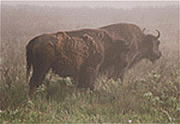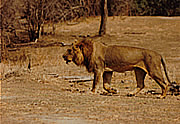

bhutan- Dion Hobcraft's Notes
 |
MAMMAL WATCHING.COM |  |
|
bhutan- Dion Hobcraft's Notes |
Home Country Guides: Books, links and trip reports whale and dolphin watchingFocus on Australia Mammal watching: Some tipsWorldwide Mammal Info: Books and links with a global coverage Mammal Watching Blog: Read and Subscribeme and my mammal watching |
Dion Hobcraft has spent a time in Bhutan and sent me these notes. The Buddhist kingdom of Bhutan has recently evolved into a popular birding destination because of its intact forest and alpine eco-systems, the protection of wildlife by the population and the huge altitudinal range you can traverse enabling one to survey its incredible biodiversity. Bhutan now also has an excellent mammal guide: A Field Guide to the Mammals of Bhutan by Tashi Wangchuk et al 2004. Any bird tour through this remarkable country will give you the chance to see some mammals as well. The most likely mammals one will encounter are squirrels and primates. The most widespread primate is the Assamese Macaque, likely to be encountered from one end of the country to the other but most abundant in broadleaf evergreen forest at altitudes below 2500 metres. It is often seen on the edges of agricultural areas. The Common Langur is locally common and can often be seen in the dry rain shadow valley on the drive from Paro to Thimphu especially around the confluence. This large woolly subspecies is sometimes given full species status. Another good area for it is around Pele La where large troops will be encountered basking in the morning sun after the sub zero temperatures that are typical here at 3000 metres. The sought after Golden Langur is common on the road that traverses from Trongsa to Shemgang and on to Tingtibi. Troops will be encountered several times daily and are often very photogenic. They can be seen eating clay from beside the road. The Capped Langur is moderately common from Limithang to Tsamdrup Jonkhar (pronounced Soma Zonkar). They tend to be skittish but can be locally quite common. Squirrels are encountered most days in this country with distinct altitudinal bands of distribution. The spectacular Giant Squirrel is moderately common in evergreen forest below 2000 metres ASL especially on the Shemgang Road. The Orange-bellied Squirrel (1500-2700 m), Hoary-bellied Squirrel (foothills to 1500 m), Red-bellied Squirrel (foothills-1500 m), Himalayan Striped Squirrel (typically above 1500 m) are all common. Spotlighting at night in broad-leaf forest at about 1500-1800 metres will often produce flying squirrels. They favour the epiphyte clad giant forest emergents and are easily found by their powerful eyeshine. The two most commonly encountered species are Hodgson’s Giant Flying Squirrel and the much smaller and less conspicuous Parti-coloured Flying Squirrel. Any encounter with a carnivore is a special day. I have seen Himalayan Black Bear twice in the day; firstly a pair spotted on an opposite hillside with a telescope on the Old Pele La Road and in 2007 a single wandering across a forest gap just below Shemgang. At Tingtibi on the hydro trail I found a nest in a fig tree a local said had been current until a few days before we arrived. It was apparently hoovering up the ripe figs. So although typically nocturnal you may get lucky with a sighting of this enigmatic animal. Leopards are quite common here but always elusive. David Bishop saw one walking down the highway in the day below Pele La which went on to flush a female Satyr Tragopan. I have also found a fresh Leopard kill of a Yak calf near here plus seen pug marks, smelt spray, heard them sawing so they are certainly around. In 2006 at Pele La we heard a Tiger roaring at dawn from our camp and then later found an adult yak it had killed two nights before (one of several it had dispatched in the past two weeks). No–one had seen it just its “deeds” as one local put it. They are scarce but present often at much higher altitudes than one would suspect but typically very elusive. The only cat I have seen on my tours is Leopard Cat which I have seen on the road from Trongsa to Shemgang in the day and one at night between Shemgang and Tingtibi. No doubt they are fairly numerous. There are many other species possible to encounter but luck is the most important factor. In 2004 I spotted a pair of Himalayan Palm Civets copulating in the early morning in a tree beside the road between Shemgang and Tingtibi - my only sighting of this species. Yellow-throated Marten is the most commonly seen carnivore in Bhutan having seen it at least six times in a wide variety of habitats. Red Panda is elusive from the road system but they must be fairly common in Thrumsingh La, Pele La and Yutong La. Spotlighting may enable a lucky sighting. Local guides see them when trekking often finding them by following up signs of freshly scratched off lichen from trees apparently. In 2007 we watched a pack of Dholes disembowel an adult female Sambar in an epic struggle in the middle of the river in Tashitang at Jigme Dorji National Park near the town of Punakha. It is also in this area and at Jakar Valley where I have encountered River Otters in the day taking advantage of the healthy population of trout and mahseer. Ungulates are dominated by sightings of Barking Deer and Goral. A reliable place to see Goral is to scope around the monastery at Cheri a short drive from the capital Thimphu. They are also regularly seen in the same dry rain shadow valley between Paro and the confluence that heads to Thimphu. Barking Deer are ubiquitous throughout the broad-leaf forest and often bark throughout the evening when camping in Tingtibi and Limithang. The Serow is much scarcer but I have encountered it in the day a couple of times at Pele La, near Thrumsingh La and also at Shemgang. One year we found a snared female dead in the forest near Pele La, probably hunted by immigrant road workers who do not share the same beliefs of the local Buddhist population. The Takin is the national mammal of Bhutan; a captive breeding population can be viewed in the valley above Thimphu. It is possible to trek into Jigme Dorji National Park above the thermal spring’s area to see a well protected herd but they do move around considerably altitudinally with the seasons. David Bishop has seen Himalayan Musk Deer between Jakar and Ura but I am yet to be lucky with this animal in Bhutan. The only Sambar I have seen was the one being demolished by the Dhole. Near Samdrup Jonkhar in the jungle behind the abattoir site I have seen fresh signs of Asian Elephant and been warned of an aggressive individual in this area-so be careful! On the smaller scale I have encountered numerous Royle’s Pika, voles, horseshoe bats, spotlit a White-bellied Rat at Shemgang and found a recently killed Long-tongued Blossom Bat near Tingtibi. It is often difficult to identify these sightings to species level without them in the hand. Every year I look forward to mammaling in Bhutan, spending more time spotlighting and hoping to encounter some of those elusive Asian mammals!
|
|||||||
|
||||||||
 |
||||||||